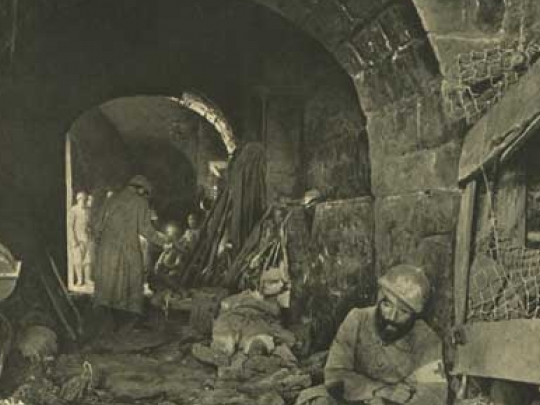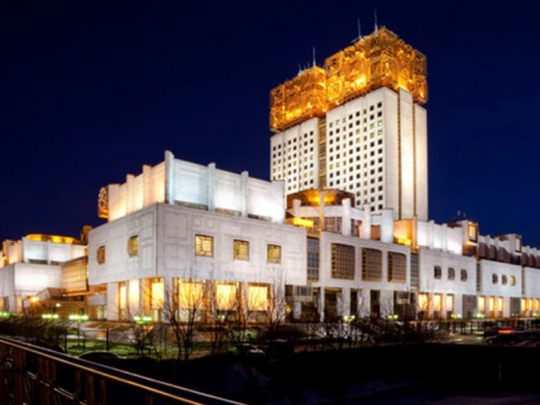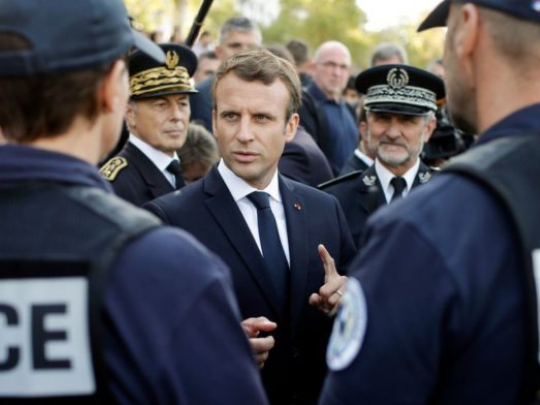Hell on Earth

One hundred years ago this week, German artillery launched a mighty barrage of one million shells at French defenses on the wooded hills and deep ravines above the ancient fortress city of Verdun. The thunderous explosions of the “trummelfeuer” were heard 160 km away.
By the second year of World War I, static trench warfare extended along the Western Front from the Belgian coast to Switzerland – a bloody modern version of medieval siege warfare. Neither the German Empire nor the Allies could impose a decisive victory. Suicidal frontal attacks against machine guns and field artillery slaughtered hundreds of thousands of soldiers.
German army chief Eric von Falkenhayn decided to bleed the French Army to death by attacking a position it could not cede – Verdun. Heavy artillery and poison gas were his weapons of choice. Battles of attrition are the last resort of poor, unimaginative, brutal generals.
The initial German infantry attack fell on the Bois de Caures, defended by two French battalions of Col. Emile Driant. His valiant defense delayed the German attack, but Driant was killed and his two battalions wiped out.
The French commander, Gen. Nivelle, ordered his 2nd Army: “No surrender; no retreat, not even an inch. Die where you stand.” And it did.
The Germans pushed south towards the city, fighting for every meter of ground against fierce French counter-attacks. On 4-5 June, the Germans poured 100,000 poison gas shells – chlorine, cyanide, mustard, phosgene – onto only 4km of French front, then launched infantry assaults. The French soldiers had no gas masks. Thousands died in agony or were blinded. Yet they held.
Shells churned the battlefields into vast quagmires of putrid mud, rotting corpses and hundreds of thousands of horses, overhung by a toxic miasma of lethal gas. Troops went days without food, or medical attention; they drank from shell craters filled with rotting corpses – or, very often, drowned in them. Flamethrowers inflicted frightful casualties. Shells poured down around the clock. Every tiny elevation, every fort, became a little Thermopylae.
Twenty forts built in the 1880-1890’s to defend Verdun, and believed obsolete, became the epicenter of the battle. The most attacked were legendary Moulinville, Souville, Douaumont, Vacherauville, Froidterre. Two, Thiaumont and Tavannes, were ground to dust.
At the height of the German attack on Fort Vaux, over 2,000 heavy shells were exploding every hour on the superstructure of the little fort, including 420mm one-ton monsters. When we talk today about soldier’s combat stress, think of the garrison of Vaux, burned, gassed, starving, poisoned by CO2, dying of thirst, drinking their own urine and fearing they would be buried alive if the fort collapsed.
The fort’s last messenger pigeon struggled to French lines, then died of smoke poisoning. His statue sits near the fort’s entrance. When the French commander, Sylvain Reynal finally was forced to surrender, he cockily told the German Crown Prince, “ you did not defeat us; it was thirst.”
For the next ten terrible months, millions of German shells churned up the ground, pulverizing French positions and their defenders. French artillery fiercely riposted. French counter-attacks lost huge numbers of men. The French effort to recapture Fort Douaumont alone cost 100,000 casualties.
Three-quarters of France’s army (8 million men by 1918), an entire generation of French men, was rotated through the hell of Verdun, ensuring that the entire nation would feel its horrors. Units stayed at the front until they lost 60% casualties.
Almost every village in France has a war memorial with the names of its sons killed at Verdun. The grim heights above Verdun became France’s Calvary. The French army’s pledge, “they shall not pass” became France’s national oath and the new commander Marshall Petain’s rallying cry.
The Germans, as always fighting like lions, lost some 700,000 casualties. Fighting like tigers, the French finally held the last defense line before Verdun. Nearly one million French soldiers were killed, wounded or mutilated for life at Verdun. France suffered another million dead during the war, many in the suicidal offensive at the Chemin des Dammes.
At war’s end, there were not enough young Frenchmen to plow the fields or father babies. France’s heart had been torn out. In May, 1940, German panzer units, using new fluid tactics of rapid movement and close air support, captured Verdun and its rearmed forts in only 24 hours.
- Source : Eric Margolis















